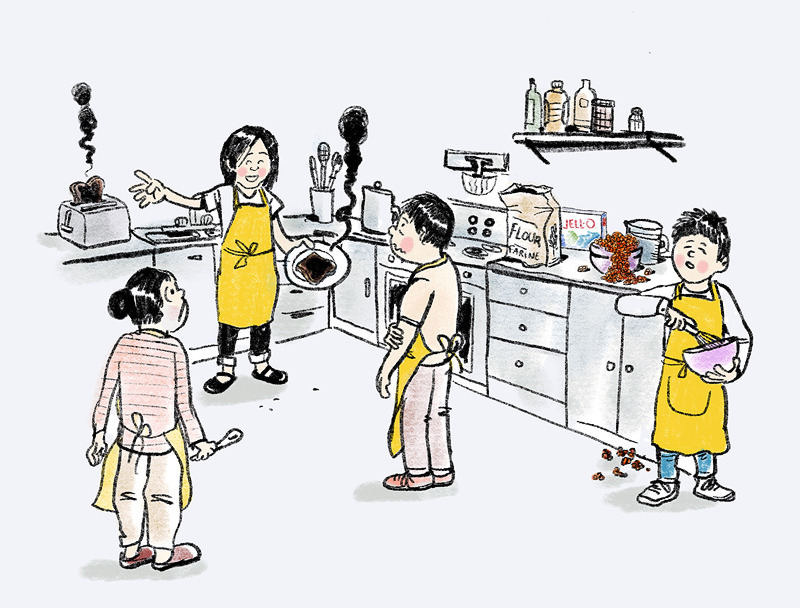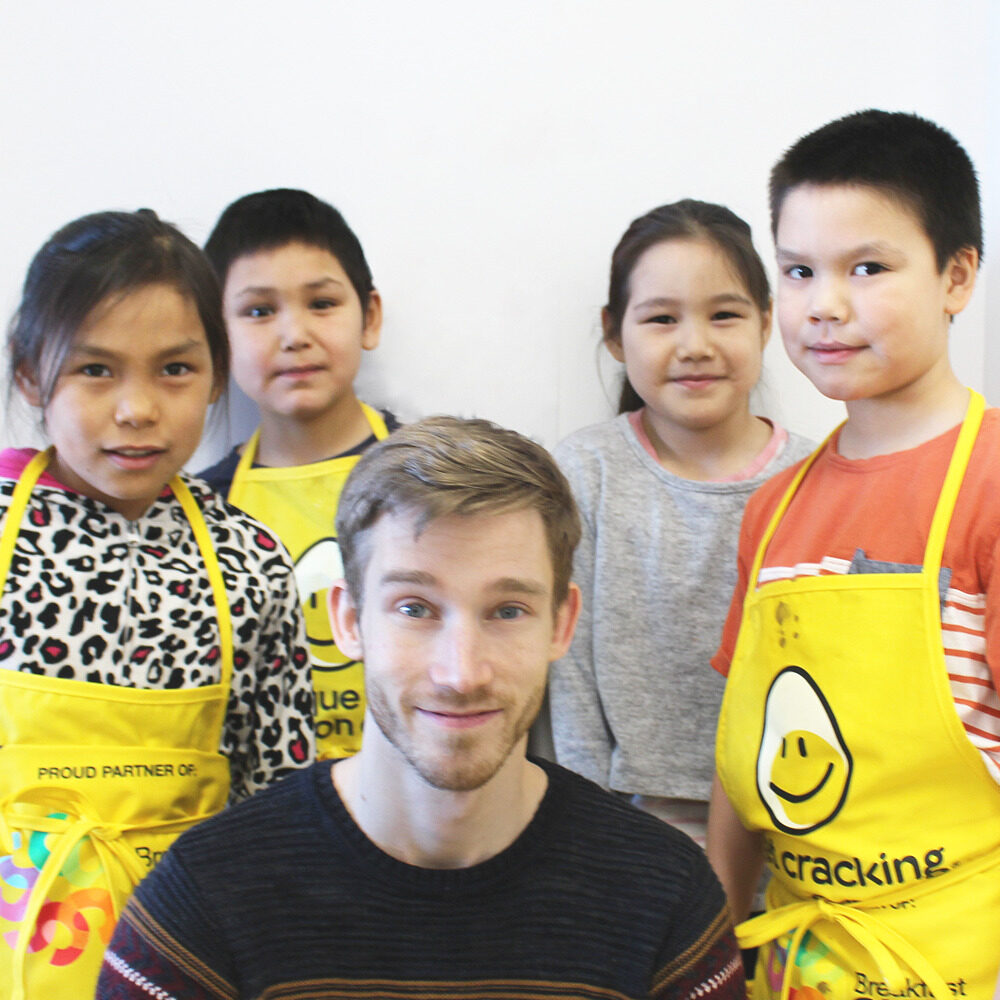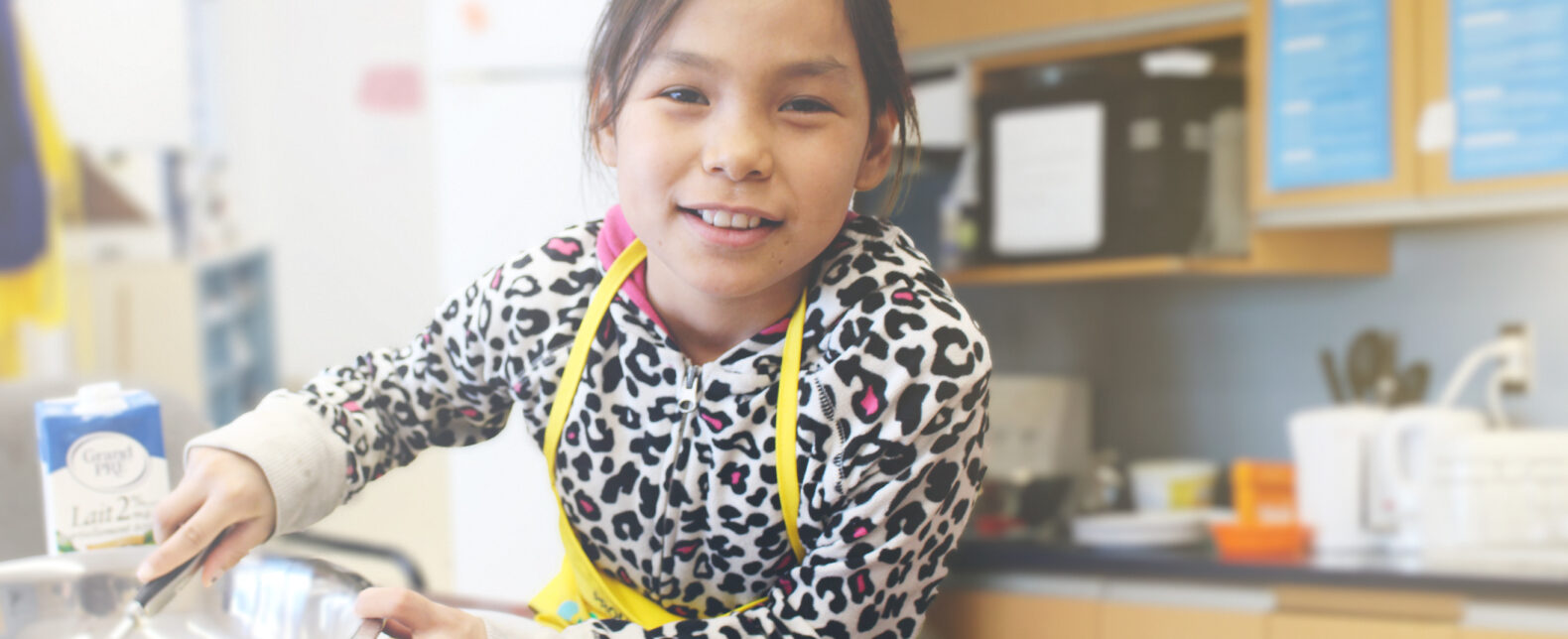Cooking Session
in Pigiurvik’s kitchen
When we read about the Breakfast club initiative, it is easy to understand the benefits children gain from eating a balanced breakfast every morning.
Starting my day in the kitchen at Pigiurvik School, I saw first hand the value – aside from the nutritional one – of such an initiative: the Breakfast Club is more than feeding your belly a meal; this program is also a cooking activity, with students actively handling the delivered food.
From baking fluffy muffins to making golden pancakes, kids learn how to prepare a recipe and how to act as a group, from the first check mark on the ingredient list to the “ready-to-be-served” dish on a warm plate. Students, under the supervision of their respective homeroom teachers, aren’t graded as this remains an unofficial class. Phew! There’s no reason to fear failure after handing a burnt toast to your peers.

What does a collective cooking session actually bring to the table? I thought it would be interesting to highlight the sharing aspect of cooking and shortlist what it may potentially unlock in the way of learning:

1. Sharing tasks
« Is the aqpik pie ready? Only three minutes left? AWE-SOME! » (/◕ヮ◕)/
Prior to the baking process, tasks had to be completed in order to achieve a satisfying result: ingredients to buy and mix, crust to prepare and fill… Just like our homemade aqpik pie, a group project needs to be divided – preferably into evenly sized slices – and then shared among the team. Let’s face it, dividing the workload effectively often remains a challenge even in our daily lives as adults. Thus, having kids tackle a project early on by breaking it down into tasks to be shared helps ensure a better understanding of how important the entire process is, from start to finish.
2. Sharing knowledge and ideas
« Times up! No oven mitts around… how will I grab the pie? » ¯\_(・へ・)_/¯
It could be a simple yet helpful piece of advice that one kid transfers to another. Each piece of advice is based on what children have initially learned based on their own observations or experiences. For instance, how to hold a knife or how to properly cut a specific fruit. To push the concept further, a student could get creative and manage to safely take out the aqpik pie from the oven, even if mitts are nowhere to be found. Would a kitchen towel do the trick? An idea can strike any student’s mind and swiftly travel from ear to ear through an entire class. Overall, it’s about being more efficient as a whole, where everyone’s knowledge can grow from one’s shared input.
3. Sharing connections
« Is this slice for me? Oooo… Nakurmiik! » (>^ ‿^)> <(^‿ ^<)
Far from carrying any romantic connotation, sharing a connection between one another is characterized by students cooperating in a fun and compassionate behaviour. With the teacher’s help, a student can recognize how essential it is to not only include his or her peers during an activity, but also to have them feel comfortable enough to enjoy the project they’re a part of. In my eyes, connecting with peers definitely does make the end result better.

Kids are genuinely happy about cooking sessions. The smile on their faces speaks for itself, especially when that smile lasts the whole activity.

Looking back on how students were able to work together with their classmates, I really felt that all of the skills mentioned above allow our youth to sharpen their work methods and how they approach teamwork. Raising autonomous students shows initiative and, is a reflection of their ability to develop useful life skills now that they can apply later on in adulthood.
Accompanied by teachers, students get to interact in a positive environment in which the development of a second language is favorable. Among the rest, they are taught safety when using kitchen appliances and cleanliness when washing their hands and dishes. Access to cooking knowledge definitely belongs in school!
